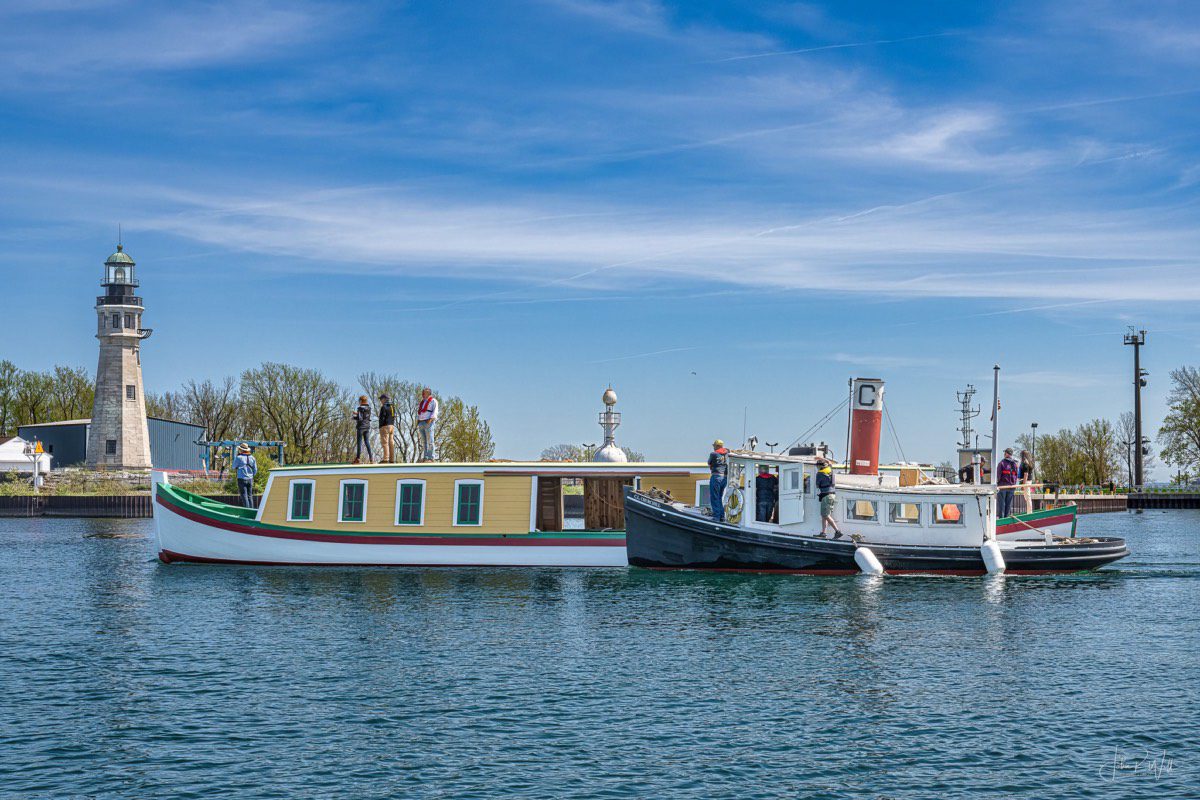Bicentennial Voyage of the Erie Canal Boat, Seneca Chief
This week, the Erie Canal Boat, Seneca Chief, a full-scale replica of the first voyage made in 1825, continues its journey along the Erie Canal stopping at ports in the Mohawk Valley. The Buffalo Maritime Center crew, comprised of staff and volunteers, offer a wonderful opportunity to experience the history of the Erie Canal.
The Erie Canal transformed the young United States, reshaping commerce, transportation, and daily life in the 19th century. Its unprecedented speed of travel enabled the rapid movement of goods, people, and ideas, fueling economic growth and innovation. – Buffalo Maritime Center
The Planting of the White Pines & the Gathering of the Waters
As the Erie Canal Boat Seneca Chief makes its way across New York State and through the Mohawk Valley, White Pine trees will be planted “as a symbolic tribute to the Haudenosaunee – a commitment to a sustainable future – and celebrate the communities along the canal.”
Bicentennial Voyage Dates
- October 8: Bicentennial Voyage stop in Rome
- October 9: Bicentennial Voyage stop in Utica
- October 10: Bicentennial Voyage stop in Herkimer
- October 11: Bicentennial Voyage stop in Little Falls
- October 12: Bicentennial Voyage stop in Canajoharie
- October 13: Bicentennial Voyage stop in Amsterdam
Click the links to learn more about the events and times at each location.
Throughout the boat, the historical details of the 1825 Seneca Chief are tactile and experiential entry points for visitors to explore life in the early Erie Canal era.
Immersive Audio
Ambient audio of life on a canal boat and a phone-based audio tour with people of the past telling their stories on the canal, further expand the experience.
Interactive Video
Through touch-screen videos visitors will discover different boatbuilding traditions and the timeline of the Erie Canal.
Cargo Exhibit
As visitors enter through the Cargo Hold doors, they will learn about the cargo carried by the original Canal Boat with displays of Great Lakes lumber, beaver fur, and indigenous goods including a birch bark canoe.
Crew and Passenger Cabins Exhibit
In the Crew and Passenger Cabins, visitors will see the sleeping accommodations, bedding and furnishings, the stove where meals were prepared, and the table where meals were eaten.
Guided by docents, visitors will board the boat to learn about boatbuilding across time and cultures, the role of the original boat in the opening of the Erie Canal in 1825, and the people and goods it carried.
This is a unique opportunity that you won’t want to miss.




